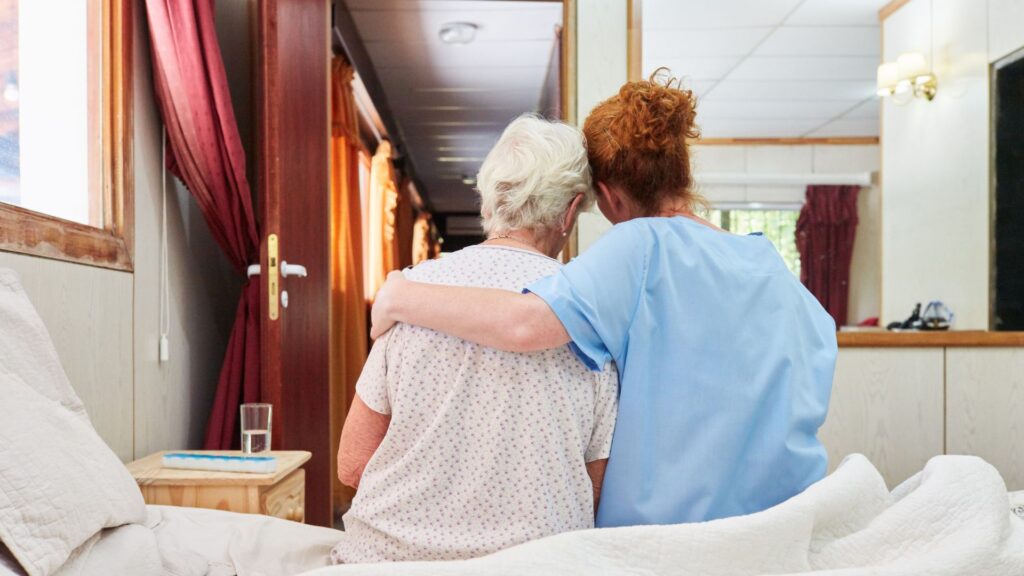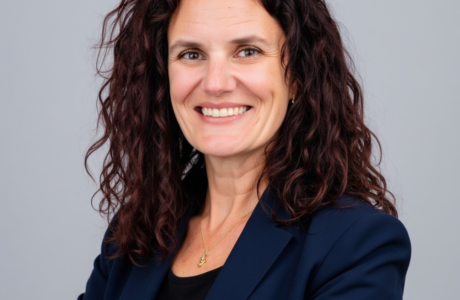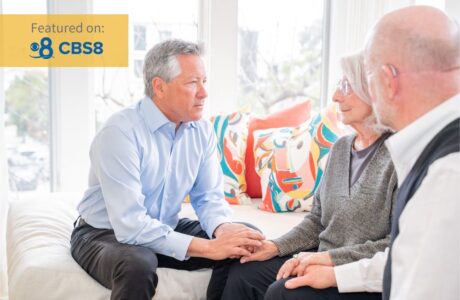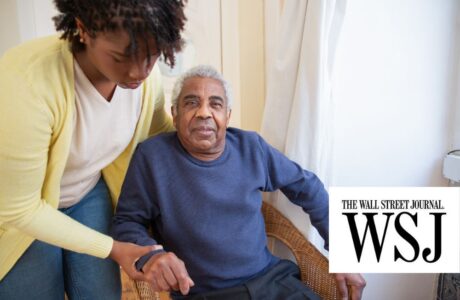
World Hospice & Palliative Care Day 2025: A Family Guide to Early Support and Real Access
Why October Matters For Those Considering Hospice or Palliative Care
Every October, families and healthcare professionals around the world pause for World Hospice & Palliative Care Day. In 2025, the global theme is clear: Achieving the Promise—Universal Access to Palliative Care.
If you’re caring for a loved one with cancer, heart failure, dementia, or any serious or complex illness, the word “palliative” can feel heavy. Many assume it signals the end. But that’s one of the biggest myths. Palliative care is not about giving up—it’s about gaining support, often earlier than you think, and making sure care aligns with what matters most.
This article serves as a guide to help families understand what palliative care encompasses, how to request it, and where to access it—whether at home, in the hospital, or alongside ongoing treatment.
What Does Palliative Care Actually Mean?
At its core, palliative care focuses on quality of life. It addresses pain, shortness of breath, fatigue, anxiety, depression, and caregiver stress—while still leaving room for curative or life-prolonging treatments.
How It Differs from Hospice
- Palliative care can start at any stage of a serious illness. It’s not tied to prognosis.
- Hospice care is designed for the final six months of life when the focus shifts to comfort. Hospice is also a defined Medicare benefit, which means eligibility rules apply.
Families often confuse the two, but knowing the difference gives you power. It helps you ask for palliative support early, before a crisis forces decisions.

Why Access Matters Now More Than Ever
Globally, less than 15% of people who need palliative care receive it. In the U.S., access often depends on zip code, health system, or insurance coverage. This is why advocacy groups like the Worldwide Hospice Palliative Care Alliance dedicate October to raising awareness.
For families, this gap is personal. Without palliative support:
- Patients experience unnecessary pain or hospitalizations.
- Caregivers burn out faster.
- Families make rushed choices under stress.
With it, patients report better symptom management, improved mood, and greater alignment with their values.
The Global Picture
The World Health Organization estimates that more than 56 million people worldwide need palliative care each year, including 25 million who die with serious health-related suffering. The majority live in low- and middle-income countries where services are scarce. Even in the U.S., rural families often face barriers to finding nearby providers. This inequity is exactly what the 2025 theme—universal access—is meant to highlight.
A Simple Script to Request Palliative Care Early
Most families don’t know they can simply ask. At your next doctor’s visit, try this script:
“We want help managing symptoms, stress, and care coordination at home while we continue treatment. Can you place a palliative care referral for us now?”
Where and How Palliative Care Happens
At Home
In-home palliative care is increasingly available and often preferred. It reduces unnecessary hospital visits and keeps care centered around the family.
In the Hospital
Hospital-based palliative teams can be consulted during inpatient stays, especially for complex decisions or symptom crises.
Outpatient Clinics
Some larger health systems offer palliative care clinics where patients can schedule visits like any other specialty.
Navigating Coverage
- Medicare: Pays for hospice under Part A. Some palliative consults may be billed under Part B as specialty visits.
- Private insurance: Often covers parts of palliative care, though limits vary.
- Medicaid: State-specific, but often supports in-home services.
Practical tip: always ask your provider and insurer whether in-home palliative care is included, not just hospital consults.

The 30-Minute “Access Checklist” for Families
Step 1: Prepare a one-pager (5 min)
- Current medications
- Top three symptoms
- Top three goals (comfort, mobility, sleep, etc.)
- Primary decision-maker contact
Step 2: Request the referral (5 min)
Use the script above.
Step 3: Clarify coverage (5 min)
Ask: “Which palliative services are covered at home under our plan?”
Step 4: Coordinate supports (10 min)
Confirm who manages after-hours calls, equipment needs, and visit frequency.
Step 5: Schedule follow-ups (5 min)
Book the next two visits in advance.
FAQs (Answering “People Also Ask”)
Q: Is palliative care only for the last days of life?
No. It can start at diagnosis and run alongside treatment.
Q: What is the difference between palliative care and hospice?
Palliative care is for any stage; hospice is for the last months with a Medicare-defined benefit.
Q: Can palliative care happen at home?
Yes. Many programs now offer home-based palliative care.
Q: Who pays for palliative care?
Coverage varies, but some services are covered by Medicare, Medicaid, or private insurance.
Q: What should I ask my doctor?
Ask: “Can you place a palliative referral for us now, alongside ongoing treatment?”
Caregiver Outcomes & Mental Health
Palliative care is not only for patients—it’s for the people who love them. Studies show that when caregivers receive structured support, they experience less depression, lower anxiety, and better physical health.
Signs of caregiver burnout to watch for:
- Sleeplessness or chronic fatigue
- Irritability or withdrawal from social life
- Feeling hopeless or “on edge”
- Neglecting your own medical needs
If even one of these sounds familiar, asking for a palliative referral can bring relief—not only by managing your loved one’s symptoms but also by giving you respite, guidance, and emotional support.
Practical Tools You Can Use Today
Doctor Dialogue Script
- “Our care goals are comfort, mobility, and sleep. Can a palliative team help us manage these at home?”
- “Which services are covered under our insurance?”
- “Who do we call after hours for urgent issues?”
Family Planner Checklist
- Values statement: what matters most
- Symptom log template
- Copies of advance directives
- Follow-up schedule
Trusted References
- National Institute on Aging: Palliative Care Basics
- CMS Hospice Booklet
- Worldwide Hospice Palliative Care Alliance
Patient Stories: What Families Experience
One daughter caring for her mother with dementia said that palliative care allowed her to “be a daughter again instead of a full-time nurse.” Another family described how 24/7 physician-led access brought peace of mind, knowing they could call at 2 a.m. and speak to someone who understood.
These stories aren’t unique—they reflect what happens when care is humanized and brought home.

How Empowered Endings Supports Families
At Empowered Endings, palliative care isn’t a last resort—it’s a humane, physician-led pathway to clarity, comfort, and choice, delivered with whole-person support for patients and the people who love them. Our integrated model fills the gaps that traditional systems miss, coordinating closely with your current clinicians while centering care where life is lived—at home.
What we provide (tailored to your family’s needs):
- Physician-led guidance & 24/7 support for complex decisions and symptom management, so you’re never navigating the hard moments alone.
- In-home clinical services (e.g., visits for assessments; coordination for labs and IV fluids at home when appropriate) that reduce avoidable ER trips and keep care consistent.
- Emotional, spiritual, and grief support with trained counselors and end-of-life specialists for the full family system.
- Education on legal end-of-life options (including MAiD and VSED where lawful), delivered with sensitivity, oversight, and robust preparation.
The Foundation’s role:
The Empowered Endings Foundation expands access through free support groups, education, and financial assistance—so more families can experience an empowered end-of-life journey, regardless of resources.
Why Families Trust Empowered Endings
What makes Empowered Endings different is the way we blend medical precision with human presence. Our team is led by seasoned physicians and supported by nurses, doulas, and grief counselors who bring decades of experience in palliative and end-of-life care. We are not bound by the limitations of insurance, which means we can offer services traditional systems can’t—like IV fluids or labs at home, advanced guidance on Medical Aid in Dying (MAiD), and grief support for families. Families consistently tell us the difference is night and day: they feel seen, guided, and relieved of the pressure to “figure it all out.” With 5-star reviews and trusted partnerships across California, Empowered Endings is where medical care meets dignity, agency, and peace of mind.
Conclusion: This October, Choose Early Support
On World Hospice & Palliative Care Day, the global message is about access. For your family, access means asking early, getting the right team in place, and staying supported at home.
You don’t have to wait for a crisis. You can start palliative care today—and find that it makes every tomorrow easier.
One Next Step
👉 Families: Book a complimentary Connection & Clarity Call—a gentle, no-pressure 30–45 minute conversation with a trained expert to map options, answer urgent questions, and outline a next step that fits your values.
References (trusted, for your convenience)
- National Institute on Aging (NIA): Hospice & Palliative Care — plain-language explanations for families.
- Medicare (CMS): Medicare Hospice Benefits — eligibility, what’s covered, and how benefits work.
- eHospice/WHPCD: World Hospice & Palliative Care Day 2025 Theme — “Achieving the Promise: Universal Access to Palliative Care.”
- CaringInfo (NHPCO/Alliance for Care at Home): Palliative Care Resources — what palliative care provides & why it helps families stay out of the ER.
- American Bar Association: Advance Care Planning Resources — state-specific tools and decision-making support for families.





